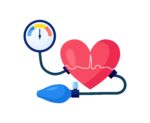Glucose: Its Role, Regulation, and Impact on Health Glucose is a simple sugar (monosaccharide) that serves as the body’s primary source of energy. It is obtained through the digestion of carbohydrates in the diet, such as starches and sugars, and is also produced in the liver through a process called gluconeogenesis. How it works in […]
GTN Spray (Glyceryl Trinitrate)
GTN spray is commonly used to relieve chest pain (angina) by dilating blood vessels and improving blood flow to the heart.
Mechanism of Action
GTN works by releasing nitric oxide, which relaxes blood vessels, reducing the heart’s workload and relieving chest pain.
Contraindications
- Severe hypotension (low blood pressure)
- Recent head trauma or stroke
- Use of erectile dysfunction medications (e.g., Viagra)
- Severe anaemia
For further details, visit the GTN Spray page.
Statins
Statins are medications used to lower cholesterol levels and reduce the risk of cardiovascular disease.
Mechanism of Action
Statins work by inhibiting the enzyme HMG-CoA reductase, which is involved in cholesterol production in the liver.
Contraindications
- Liver disease
- Pregnancy and breastfeeding
- Severe muscle disorders
For more information, visit the Statins page.
Adrenaline (Epinephrine)
Adrenaline is a life-saving medication used in severe allergic reactions (anaphylaxis) and cardiac arrest.
Mechanism of Action
Adrenaline works by stimulating the heart and constricting blood vessels, improving blood pressure and breathing.
Contraindications
- None in life-threatening emergencies
- Use with caution in heart disease
- Monitor for severe hypertension
For detailed information, refer to the Adrenaline page.
Further Resources
Expand your knowledge on medications and first aid:
For comprehensive first aid training, enrol in our First Aid at Work Annual Refresher (VTQ) course.


